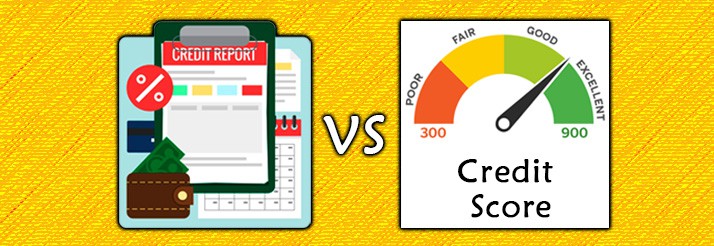If you are new to the world of credit or to actively building a positive credit history, you might have lots of questions. One of the most common is the difference between a credit report and a credit score. Credit scores provide a quick snapshot of your credit history in the form of one, three-digit number. This number summarizes and calculates everything in your credit report.
Your credit score can vary between different sources because there are several scoring models for companies to choose from. Some lenders might also modify scoring models for their own purposes depending on the type of credit you want. Here are a few more details to consider.
What the Key Differences Are
There are some additional variations to keep in mind when it comes to better understanding the differences between credit scores and credit reports. Note the main ones, below:
- Access: Your banks and other companies can provide access to your credit score. However, access to your credit report comes from the three major credit bureaus. You can get one free from each one every year. Under specific circumstances, such as during the 2020 pandemic, you might get access to reports more frequently for free.
- Variations: You have three main credit reports prepared by each of the major credit bureaus. In contrast, as noted before, you might have several different credit scores across multiple lenders and platforms.
- Inclusions: One interesting fact is that your credit reports from the major bureaus do not include credit scores. Instead, other companies use the information included in these reports to generate credit scores. Similarly, when you access your credit score, you rarely have access to all the information in your credit report.
What You Can Find In Your Credit Report
So, what exactly does your credit report contain that most credit score platforms do not provide you with? Credit reports include a lot of personal information, such as the following:
- Inquiries made on your account, by what company and when
- List of accounts, their origin dates, the types of accounts, noted balances and current standing
- Public financial records, including liens, foreclosures and bankruptcies
- Employment information, such as the names of companies you worked for
If this sounds like a full summary of your life history so far, it certainly can feel that way. However, credit reports generally only cover seven to 10 years of information. This is one of the main reasons collections, bankruptcies and other derogatory remarks on your credit history fall off after seven to 10 years.
What To Look for on Your Credit Report vs. Credit Score
When checking your credit, you ideally want a score of 700 or higher. Roughly 59% of Americans have a credit score in this range. If you have a credit score below 700, then it’s worth putting in some work to take it higher than this. Even if you have a score of 700 or higher, there is nothing wrong with trying to top out at the 850 limit.
When reviewing your credit report, verify that the information is correct. No matter how trivial some information might seem, such as when you opened an account, query it. If it proves to be an inaccuracy, dispute it. Small changes can lead to big improvements in your score.
The Potential Impact of Checking Your Credit Score
One of the main reasons many people do not check their credit scores is because they believe each check might lower the score. When you check your own credit score, you generate a soft pull or soft inquiry that has no effect on your credit score. You can choose this method as often as possible. The credit score apps offered by banks and several independent platforms use this method.
When a lender checks your credit, they may use a soft inquiry. Lenders often use this method to preapprove you for a loan or even before allowing you to open a savings account. When moving forward with credit cards or installment loans, however, the company might then do a hard inquiry. Landlords also sometimes do a hard pull before making a renting decision. This creates a negative impact on your credit score.
Note that the negative effect is only temporary. Your credit score might continue to fall for a while and then climb again. If you maintain the account in good standing, it might climb further than where it was before you opened the account. This is because you now have more available credit, which also affects your credit score.
How Coast Tradelines Can Help
One of the best ways to build your credit score is to use tradelines. Purchasing these accounts can add years to your credit history and improve how many accounts you have in good standing. You might see improvements as quickly as just one week. Get started today. You’ll be glad you did.


